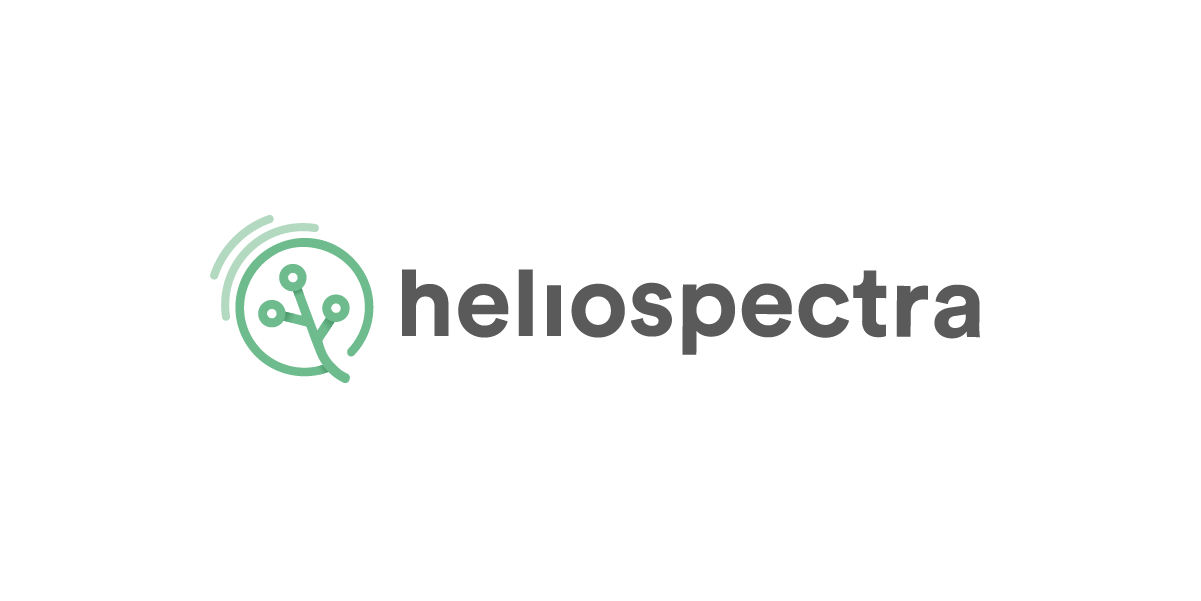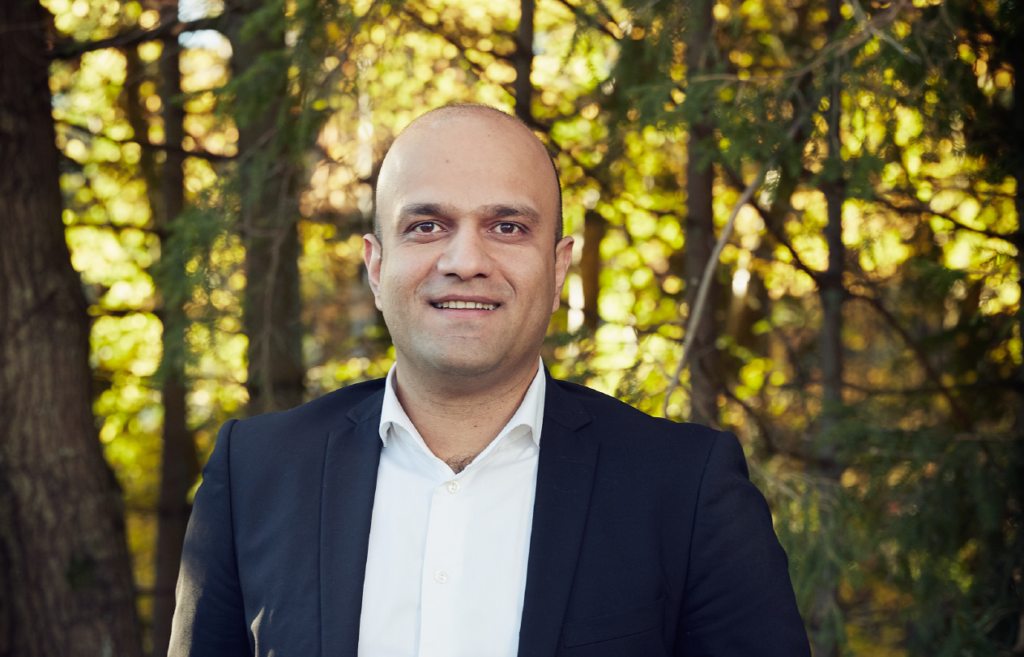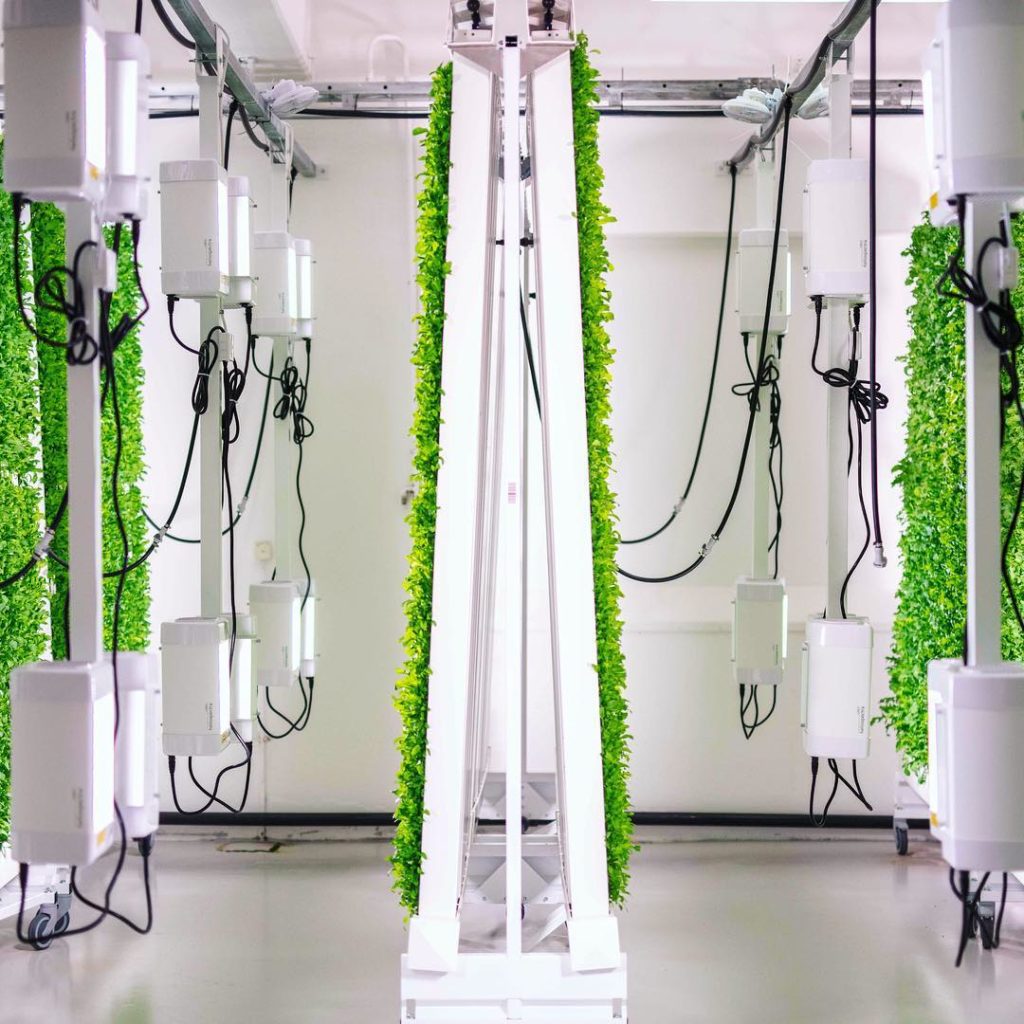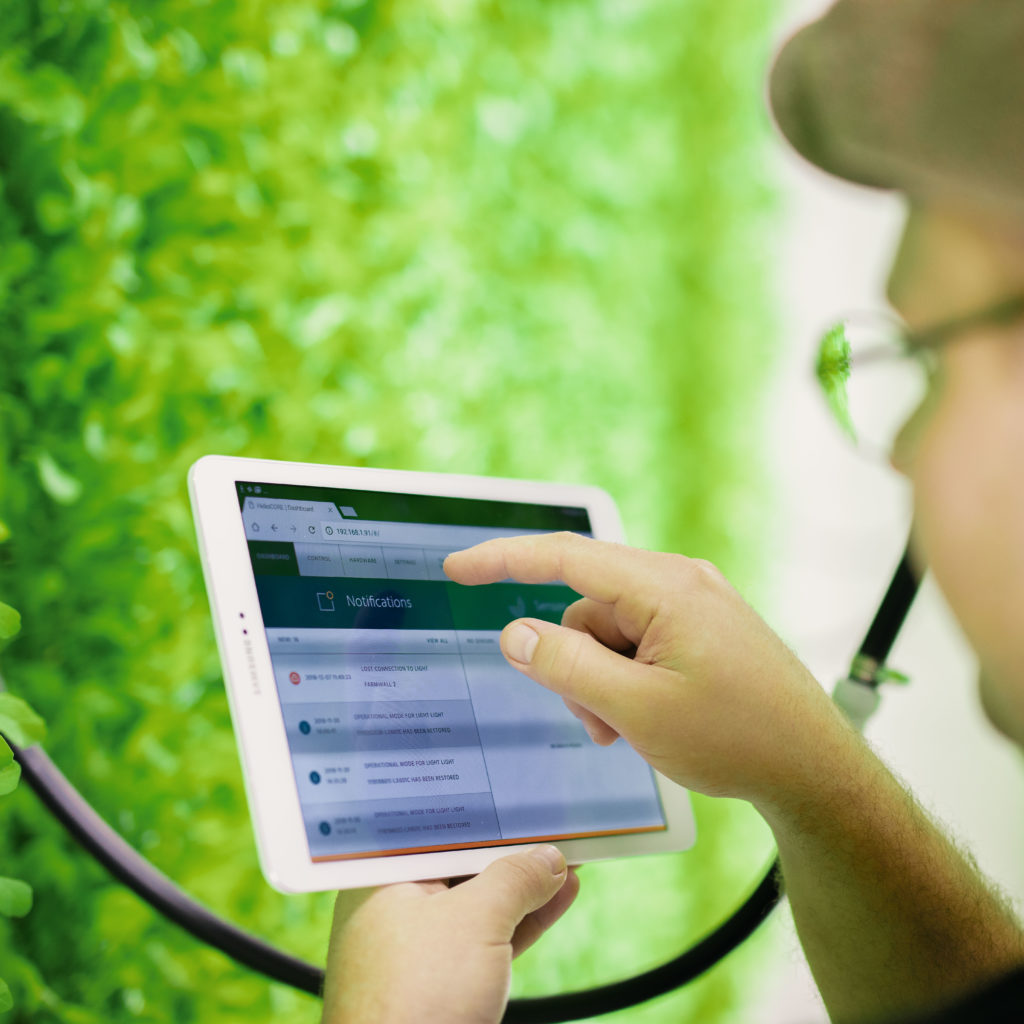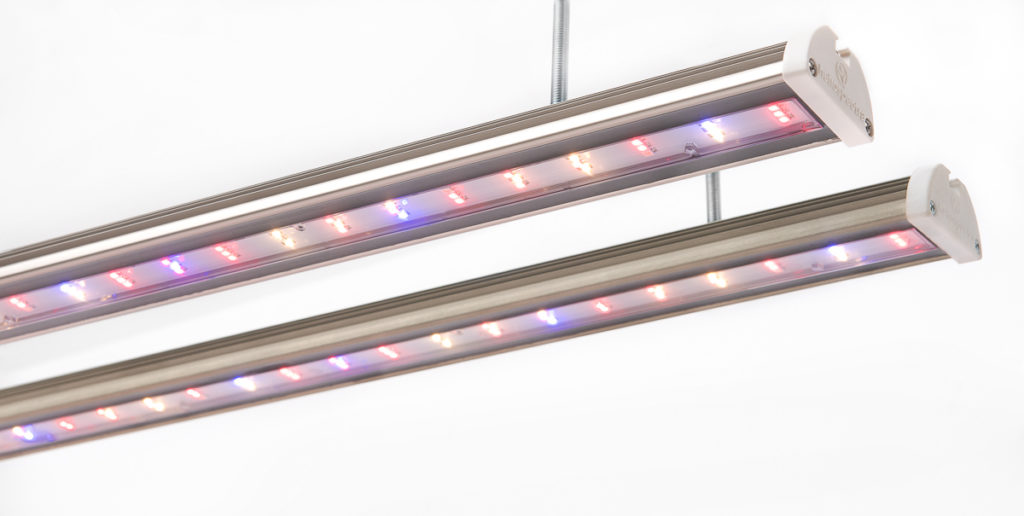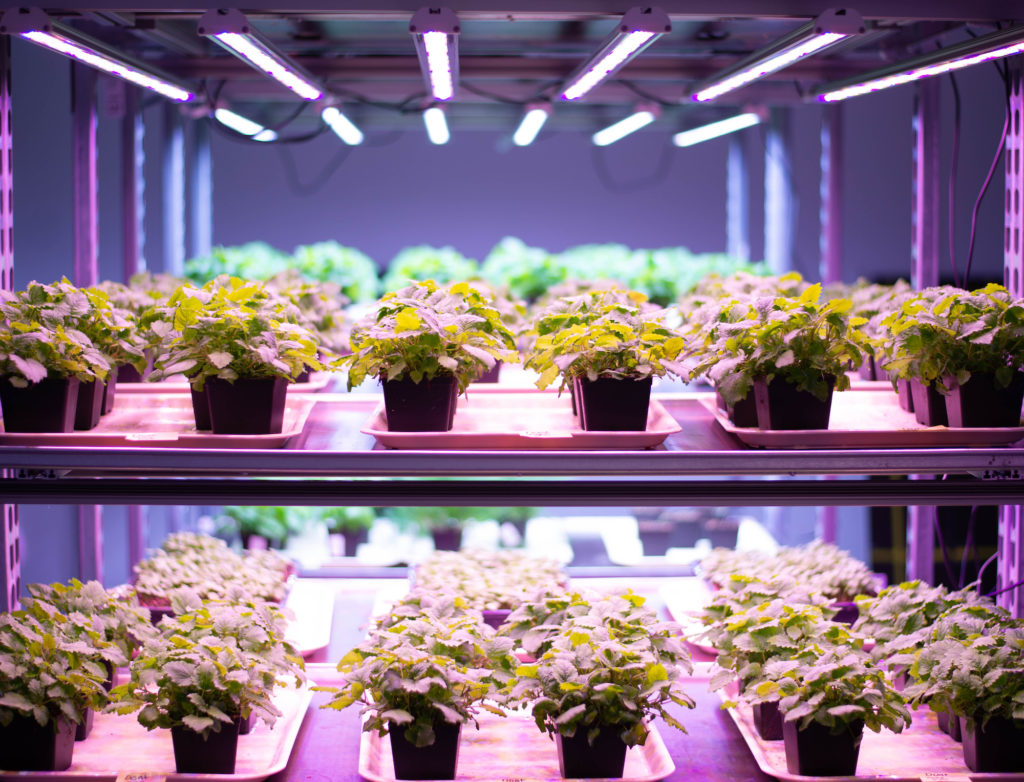AVF is pleased to announce that Heliospectra will sponsor our event: Unlocking the Power of Indoor Farming in Cities of the Future.
CEO Ali Ahmadian will join AVF at Urban Future Global Conference to provide a keynote speech on May 22. AVF’s Head of Science and Education Ramin Ebrahimnejad sat down with Mr. Ahmadian to learn more about the company and their vision for the future of lighting control in vertical farming.
When were you founded and why?
AA: Heliospectra was founded in 2006. Our founders recognised the huge potential for LED lighting solutions and horticulture applications. At that point in time, little was known about the effect of LED wavelengths and different colours of light on plants. So, the Heliospectra team’s initial focus was to conduct our own research and plant science trials to investigate the optimal light spectrum to support efficient growth across the production cycle for a wide variety of food crops. We designed a high quality, high output LED light that could also withstand the rigorous temperatures, moisture and controls required in greenhouse and indoor farming environments. Our first lighting solutions were also fully programmable with adjustable spectrum or tuneable wavelengths and most importantly, very stable and high-performance LEDs. We also had opportunity to collaborate with many well-known universities and research institutions on the important interactions between plants and light.
By 2010, we were already working on a biofeedback project in collaboration witch Chalmers University of Technology. The company’s ambition was to use sensors and create a direct feedback loop between the plants and the lights. The plants would communicate their instant requirements to ensure they received the precise amounts of light needed at the right time based on changes that might be happening inside the growing environment or outside with changes in local weather conditions and natural daylight. Our team analysed the signals from the plants and then developed dynamic controls with automated, software. The Heliospectra lights respond to the plants in real-time. Today our biofeedback solution is now known as the helioCORE™ light control system and it is exciting to see a rapidly growing number of installations as well as the superior crop performance that our growers and customers achieve.
Heliospectra remains focused on implementing our knowledge about plants, plant growth stages and how plants respond and react to light. We have also designed solutions that mimic the sun’s natural light. Our products use only state-of-the art, high quality electrical and electronic components and operate in the most resource-efficient way possible. As we incorporated inputs from growers across the globe into the product design and performance, we also re-focused Heliospectra on large-scale, commercial food production and horticulture projects rather than scientific installations. Research will always be important to our work, but our current installation focus is on vertical farms, indoor facilities and commercial greenhouses on six continents.
RE: How did you come to regard CEA as your future?
When I came to Heliospectra in 2016, I realised that the core of the company, our advanced technology and our extensive IP platform will transform controlled environment agriculture and operations. The knowledge, attitude, passion and level of engagement at every level within our team is exceptional. As an entrepreneur who had established four companies by the age of 21, I have always been passionate about sustainability and building teams who share my vision. While serving on the global leadership team with TetraPak, I focused on resource efficiency for commercial food supply and production. I see tremendous potential and opportunity at Heliospectra as we work with growers and technology solutions in these growing environments to create truly sustainable food production.
RE: What is Heliospectra’s global reach?
Heliospectra is headquartered in Gothenburg, Sweden and our technologies are developed there. Five years ago, we opened an office in the United States and we just opened our Toronto, Canada office in 2019.
Our team wants to work in closest proximity to our growers and customers. As we focus on markets in North America and continue to expand our installations in Europe, we also recognize that vertical farming and new indoor growing applications are critical. While we are an industry leader in LED lighting, we see ourselves as a solutions provider and support businesses with our plant science expertise, lighting controls, and technical services. Our success is our customers’ success.
Asia, the Middle East and other regions where there are extreme climates or water scarcity are also important. We want to develop even more advanced technologies that help businesses and growers address food security with product solutions that bolster locally grown food and supply chains in these areas.
RE: Can you tell us about some developments in the industry that you and your company are excited about?
Heliospectra enables growers to accelerate harvest cycles, increase yields and standardise crop quality. Using a holistic approach for growing in vertical farms and controlled environments, Heliospectra integrates LED lighting with our adjustable spectra and our helioCORE controls to give growers the ability to automate their growing environments. Businesses no longer guesstimate yield forecasts or time to market if they are using our helioCORE platform. The dynamic light response, data logging, artificial intelligence, algorithms, and machine learning work together to deliver predictable and repeatable results to growers.
Heliospectra and our products enable more efficient use of money, staff time and natural resources while helping growers and their business standardise production with consistent crop performance and quality year-round. We help growers reduce operating costs and deliver fresh, high quality produce to market faster. And that often commands higher margins and retail prices. Growers consistently produce lettuce and tomatoes that are the same weight, texture, colour, and flavour – no matter what season it is – by optimising the light schedules and controls and standardising forecasts, production and harvest results.
Tell us more about your collaboration with [Swiss-Swedish company focused on robotics and automation] ABB
Our collaboration with ABB, a global company with revenue estimated at $40 billion, is built on the development of shared platforms, machine learning and artificial intelligence for commercial food production and vertical farms. When we talk with growers setting up CEA environments, electrification and power grid demand can often cause headaches. If you think about the compact facility layout and production inside a vertical farm, it is easy to visual the immediate and intensive electricity needs. Our partnership combines Heliospectra’s expertise in plant science, lighting and lighting control with ABB’s extensive knowledge of robotics and automation to offer growers a holistic solution that is also customisable to the specific needs of every vertical farm operation.
Could you please elaborate on lighting strategies and helioCORE?
“helioCORE is our light control system. The software platform integrates with our lights and enables growers to control and monitor every aspect of their lighting and growing environments.”
Our helioCORE system uses sensors to create a biofeedback loop in greenhouses between the plants, the growing environment and the Heliospectra lights to monitor and update local weather conditions and prompt automatic light adjustments based on the sensor readings and natural daylight levels. The helioCORE smart DLI (Daily Light Integral) controller and the On Target (PPFD) controller ensures that greenhouse crops always receive the exact amount of light needed at the right time for optimal growth and photosynthesis despite passing storms, cloudy days or changes in interior infrastructure and equipment.
For both greenhouses and indoor vertical farms, helioCORE and the Schedule controller enable growers to pre-program lighting strategies or light recipes across the full plant growth or production cycle. They can select from a library of crop-specific lighting templates or create and save their own custom recipes within helioCORE to schedule the light run times, intensities, wavelengths or color of light needed from propagation or seedling, through vegetation phases to flower and finish at the harvest stage.
Young plants often need more blue light to establish strong rooting systems. Red and Far-Red light can be applied to a variety of herbs to prompt longer stems which make the herbs easier to cut and package at harvest. Far-red light can also be applied to red leaf lettuce just before harvest to enhance the appearance and finish. Other light treatments are also effective at boosting longer retail shelf life in microgreens and herbs keeping the colour and flavour fresh longer.
Growers can also input electricity prices into helioCORE to monitor run times and power consumptions with visual graphs and dashboards. helioCORE can also use this real-time energy data to schedule supplemental lighting at the lowest price hours while ensuring plants still receive the essential photoperiod to create additional cost savings.
The helioCORE interface is intuitive with an easy-to use web browser. Growers can organise each zone or section of their facility and use a drag-and-drop calendar feature to create their lighting schedules. Growers can also monitor their sites or receive real-time alerts about their lighting via any mobile phone or tablet device.
If a vertical farmer combines Heliospectra lights with helioCORE light control and our helioCARE Technical Services, then they are backed by a best-in-class team of experts who understand the grower’s business objectives and goals, any new inputs or changes in the growing conditions and the crop-specific growth cycle.
The cost of control: what are the key factors to operating a successful vertical farm?
I think the two key factors for creating a successful and profitable vertical farm are 1) the choice of crop and 2) the choice of technology.
Today, vertical farms have proven success with a wide variety of herbs, lettuce or leafy greens and berries as these crops respond well in compact production areas with artificial lighting. And it is exciting to see many of these operations as well as research organisations like NASA and DLR’s EDEN ISS push the envelope with successful cultivation of even more vegetables and seed varieties. Vertical farmers know well that the only constant is change and we see vertical farming operations rapidly diversifying the types of crops they are taking to retail markets.
Choosing proven technologies that deliver reliable control and crop performance is essential. Growers and vertical farmers need to recognise that lighting controls and environmental controls, or the lack thereof, impact businesses’ ability to deliver consistent, highest quality produce to market, harvest after harvest. Predictable, repeatable production cycles and consistent crop results rely on a solid control system to ensure predictable and stable revenue streams for the business.
How important are associations like AVF for growing the industry?
AVF and other partner associations are important because they provide standardised guidelines, best practices and collaboration opportunities for established growers and, also for new businesses who may be interested in starting up a vertical farm. AVF represents and advocates on behalf of a huge community of professionals and experts. The knowledge that this community shares with each other ensures the future and the success of the vertical farming and horticulture industries. And most importantly AVF helps businesses and the supply companies like Heliospectra attract new scientists, product developers and technologists who will create the new growing environments, cultivation methods and innovations for future generations.
RE: Can you evaluate the importance of UFGC in regard to connecting vertical farming with decision makers?
The Urban Future Growing Conference is an opportunity to demonstrate the difference that vertical farming and indoor farming applications are making in communities across the globe. We need to show urban planners and city planners that vertical farming is a viable solution for urban environments and that it will provide significant contributions and fresh, sustainably grown and nutritious food supplies back to local communities. My expectation is that we as an industry and as business decision makers can partner with AVF and other UFGC participants to create a new mindset or type of thinking. We share a vision that local communities will benefit from better quality crops and produce, that businesses and vertical farms will create local jobs, that industry will collaborate with universities to create more educational opportunities and vocational training programs, and that we as a society can reduce carbon footprint worldwide while securing our future food supply.


